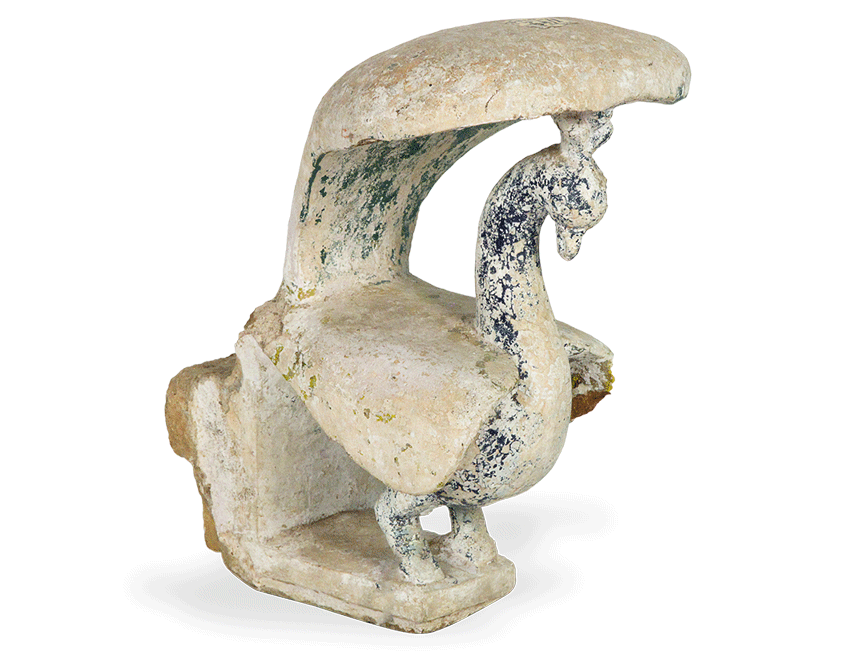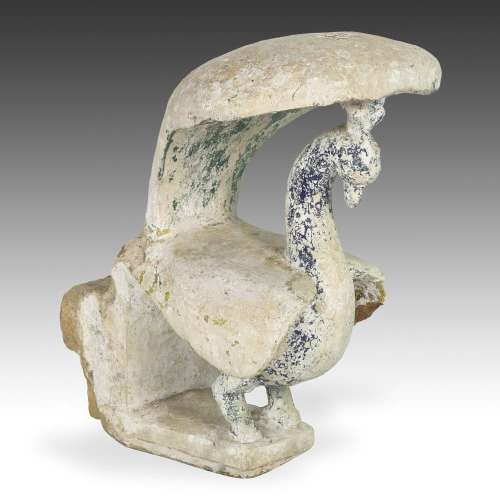Indian Temple Ornament
The bird that refused to fly!
 |
|
|
Architectural Temple Fragment with Peacock Motif; India; 18th C.; Carved and Painted Sandstone; I.D. A0506-542; $3,295 |
At 8:45 in the morning the ancient town of Bhuj in northwest India was bustling more than usual. This was not an ordinary day. It was January 26, 2001, the 52nd annual Republic Day honoring India’s constitution. At this moment speeches were being rehearsed and kids were out in the streets as opposed to school. The mood was festive and suitably noisy as cars honked at camel drawn carts and residents made all the noises a pageant of humanity can make. Exactly one minute later an eerie silence took over the town. The flapping wings of pigeons taking flight signaled something was amiss. Then the earth started to groan. At first barely noticeable, it immediately increased in intensity until it became identifiable as the terror-stricken screams of human voices. The ground began to whipsaw and shake until even the loudest scream was overtaken by the deafening cacophony of collapse. Two minutes later the event was over, its aftermath giving birth to untold stories of resilience, recovery, renewal - and this week’s New Arrival.
 |
|
|
Architectural Temple Fragment with Peacock Motif; India;18th C.; 11.5 W x 14 D x 19 H inches; Carved and Painted Sandstone; I.D. #A0506-542; $3,295 |
|
This week’s New Arrival features an architectural detail carved in the form of a peacock, a remnant of the great Gujarat earthquake of 2001. It is difficult to ascertain with certainty the address of the building whose walls it graced or the true nature of the structure. Was it a temple; a private home? Perhaps it was a government building; after all, the peacock is the national bird of India and a frequent character in Indian folklore and stories. No one can say precisely where it belonged; too many buildings were completely reduced to rubble during the quake. Yet, somehow this detail survived. Composed of sandstone and painted numerous times over the course of centuries, it landed essentially intact on the ground rather than shattering or disintegrating. Whether this was pure chance or part of a grand design is impossible to say. Its presence transcends such considerations. Although the peacock is a symbol of beauty and spiritual awakening, in this case it also became an icon illustrating the durability of the human spirit.